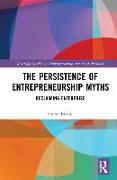- Start
- Retrotransposition, Diversity and the Brain
Retrotransposition, Diversity and the Brain
Angebote / Angebote:
Retroelements are ancient mobile DNA found in most organisms. Long dismissed as useless, selfish or "junk" DNA, they were thought to be mere intracellular parasites from our distant evolutionary past. Together with their mutant relatives, L1 sequences constitute almost 50% of the mammalian genome. L1s can retrotranspose in a defined window of the neuronal differentiation, changing the genetic information in single neurons in a "random" fashion, allowing the brain to develop in distinct different ways. Such strategy contributes to expand the number of functionally distinct neurons that could be produced from a given stem cell gene pool. This characteristic of variety and flexibility may contribute to the uniqueness of an individual brain, even between genetically identical twins. These mobile elements may be part of conserved core process responsible for evoking facilitated complex non-random phenotypical variation on which selection may act. A detailed understanding of the basic mechanisms of L1 activity may shed light on one possible mechanism for generating neural diversity.
The book results from a fascinating and stimulating exchange of ideas at the interface of the complexity of brain organization and function, the mechanisms for generating diversity and genetic mobility. This meeting of leading geneticists, molecular biologists and neuroscientists was organized by the Fondation IPSEN. Its ambitious goal was to expand the current limits of research in neurobiology not only to the benefit of those interested in the cellular and molecular processes but also for the understanding of high-level cognitive functions and the understanding of complex mental diseases. The reader can judge how far the book achieves this.
Folgt in ca. 5 Arbeitstagen




